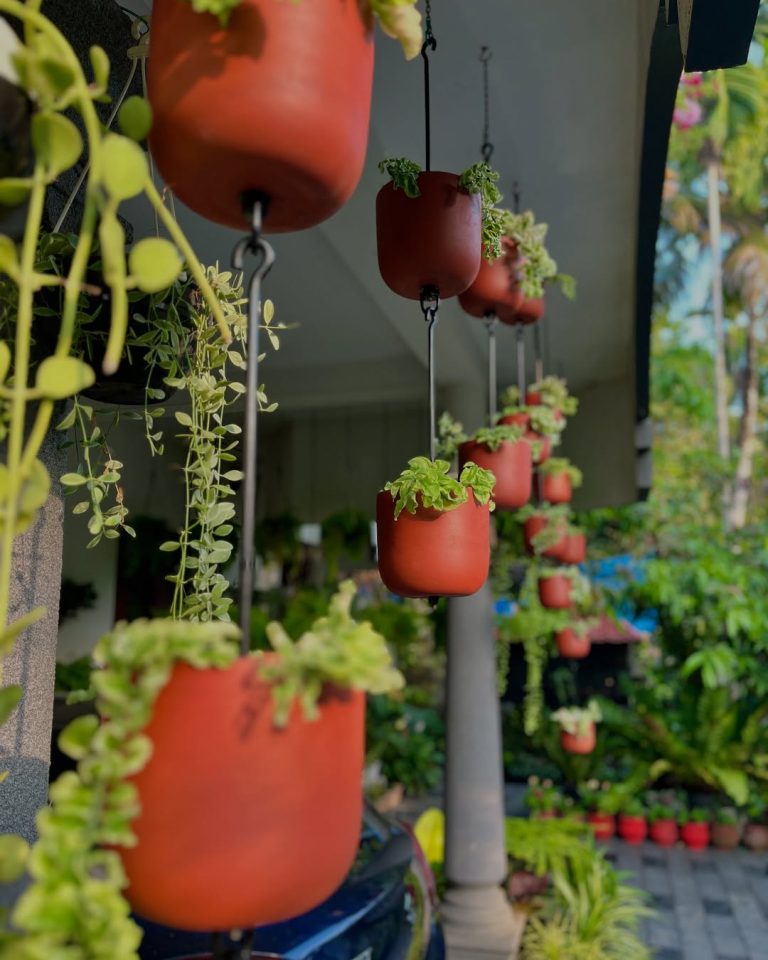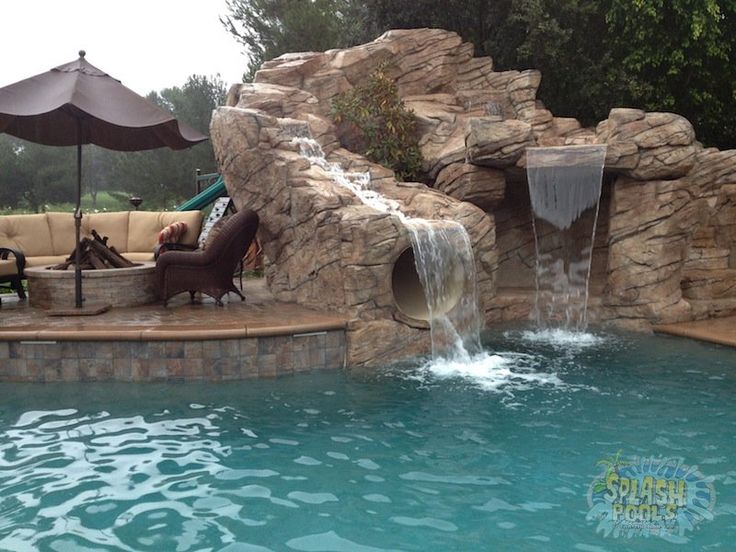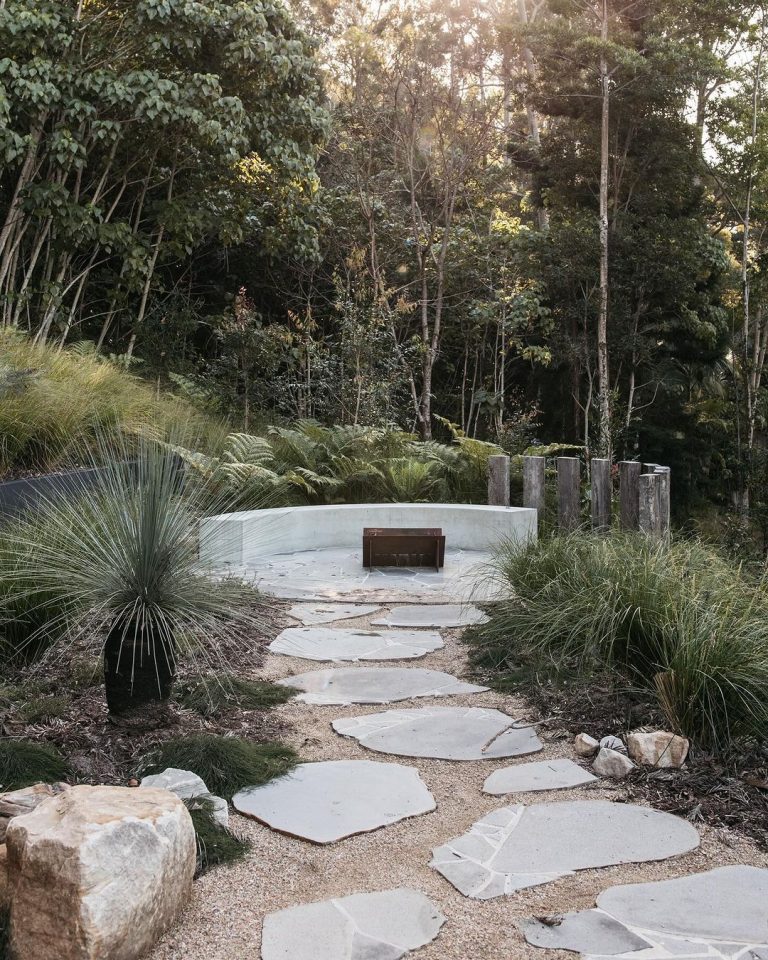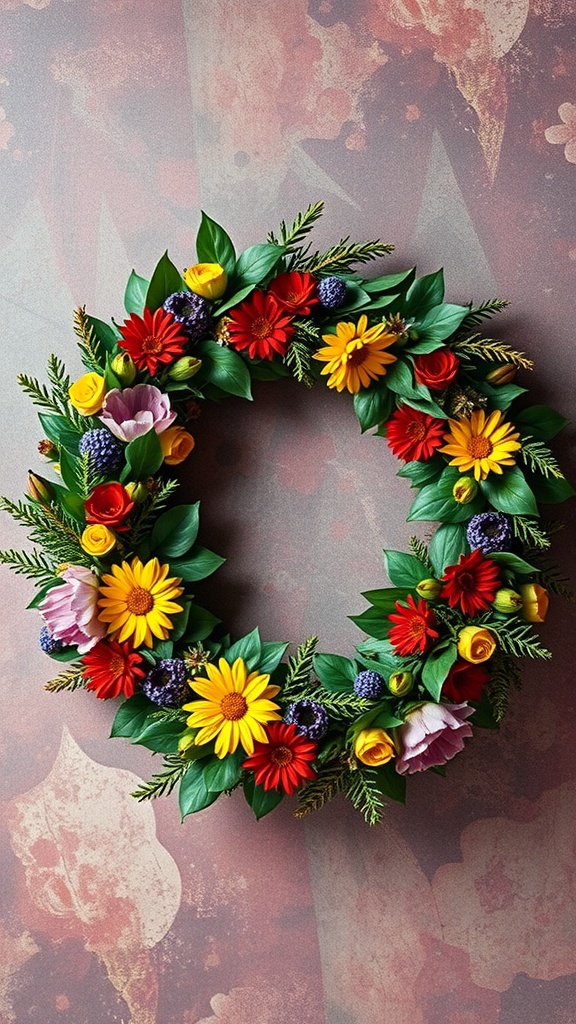27 Pea Trellis DIY Ideas to Elevate Your Garden
Growing peas in your garden is a rewarding experience, but without proper support, their delicate vines can become tangled, messy, and vulnerable to pests and disease. A well-designed trellis not only keeps your pea plants upright but also maximizes your garden space, improves air circulation, and makes harvesting easier.
If you’re looking for creative and budget-friendly ways to build your own pea trellis, this list has you covered. Below, we explore 27 inspiring DIY pea trellis ideas, divided into two sections for an easy read.
1. Simple Bamboo Teepee Trellis
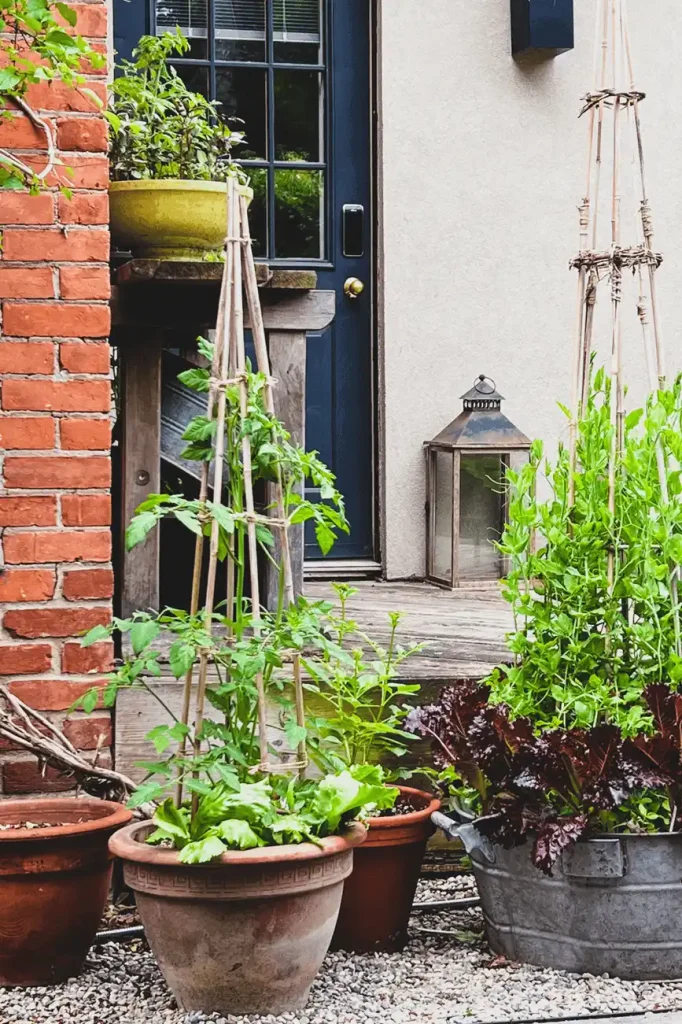
Bamboo is a fantastic material for building trellises because it is strong, lightweight, and naturally weather-resistant. A bamboo teepee trellis is one of the easiest ways to support pea plants while adding a rustic charm to your garden.
To create this trellis, gather five or six bamboo poles, each about 5-6 feet tall. Push the ends of the poles into the soil, forming a circular base, and tie them together at the top with twine or wire. For extra support, wrap garden twine or jute around the poles in a spiral pattern, giving the pea plants something to grip as they grow.
This trellis works well in small gardens or raised beds, making it an excellent option for home gardeners who want a functional yet aesthetically pleasing support system for their peas.
2. Classic A-Frame Trellis
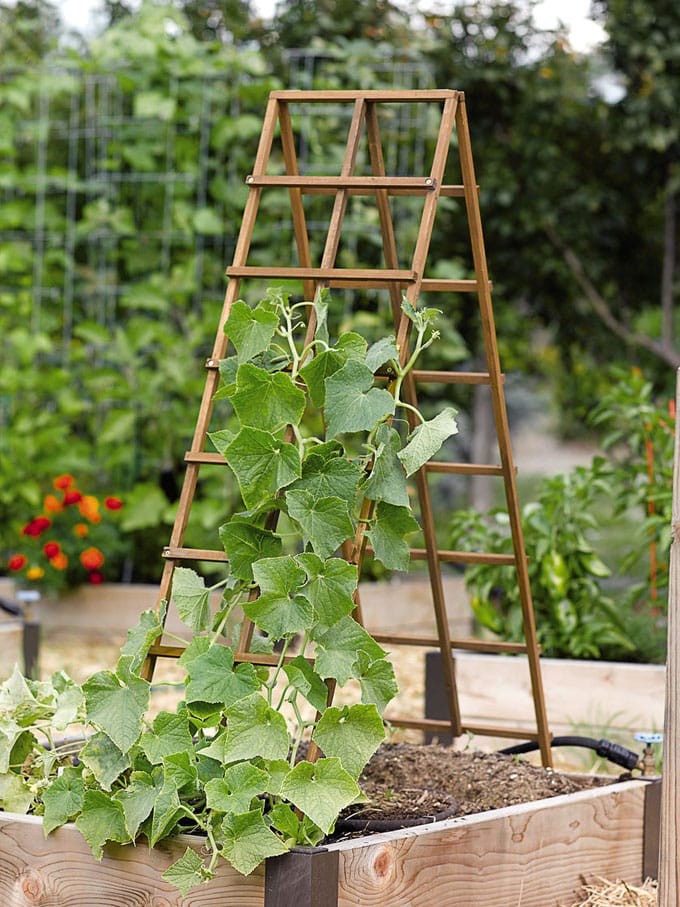
The A-frame trellis is a tried-and-true method for supporting climbing plants like peas. It provides ample vertical space while remaining sturdy enough to withstand wind and heavy plant growth.
To build an A-frame trellis, use wooden planks, PVC pipes, or metal rods to form two triangular frames. Connect them at the top with a horizontal bar or hinges, and then attach netting, chicken wire, or string between the frames for the peas to climb.
One of the best features of an A-frame trellis is its collapsibility—at the end of the growing season, you can fold it flat for easy storage.
3. Rustic Branch Trellis
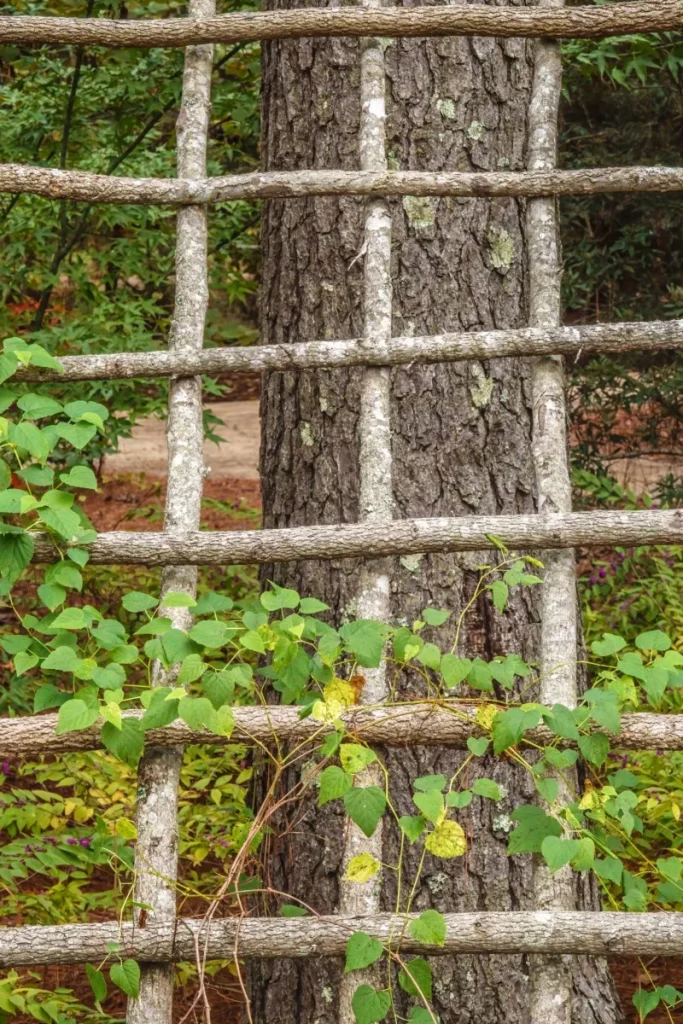
If you love a natural, eco-friendly look in your garden, a rustic branch trellis is a fantastic DIY option. This trellis repurposes tree branches or saplings to create a sturdy, organic-looking structure.
To build one, collect branches of similar length and thickness. Push two tall branches into the soil to act as vertical supports, then weave or tie smaller branches horizontally between them. Twine or wire can be used to secure everything in place.
This trellis blends beautifully with cottage gardens or wildflower beds, giving your outdoor space a charming, handmade touch.
4. Wire Grid Wall Trellis
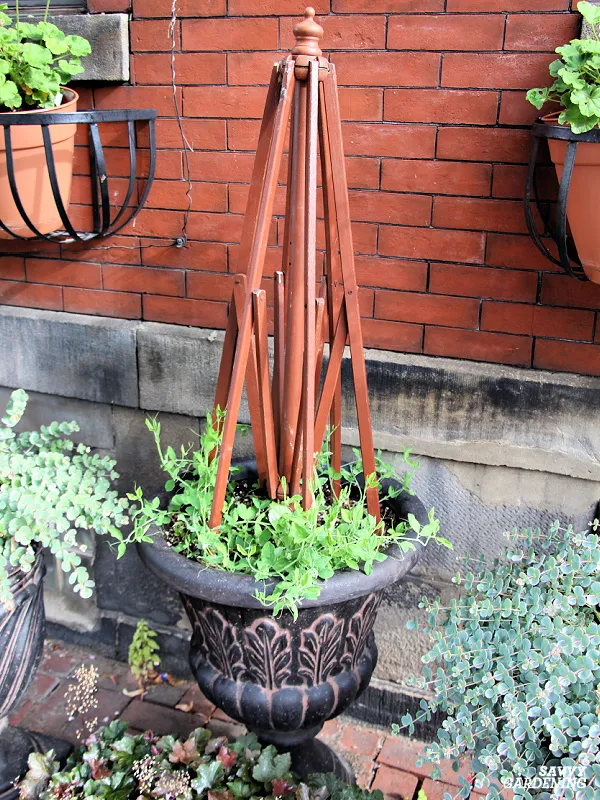
If you have limited garden space, a wire grid wall trellis can be an excellent solution. This method uses a metal or plastic grid, which can be mounted on a fence, wall, or freestanding posts.
Simply attach a wire mesh panel to your desired surface and secure it with nails, hooks, or zip ties. Peas will naturally find their way up the grid, creating a lush vertical garden.
This trellis is particularly useful for urban gardeners or those with patios and balconies who want to grow peas in containers.
5. PVC Pipe Trellis
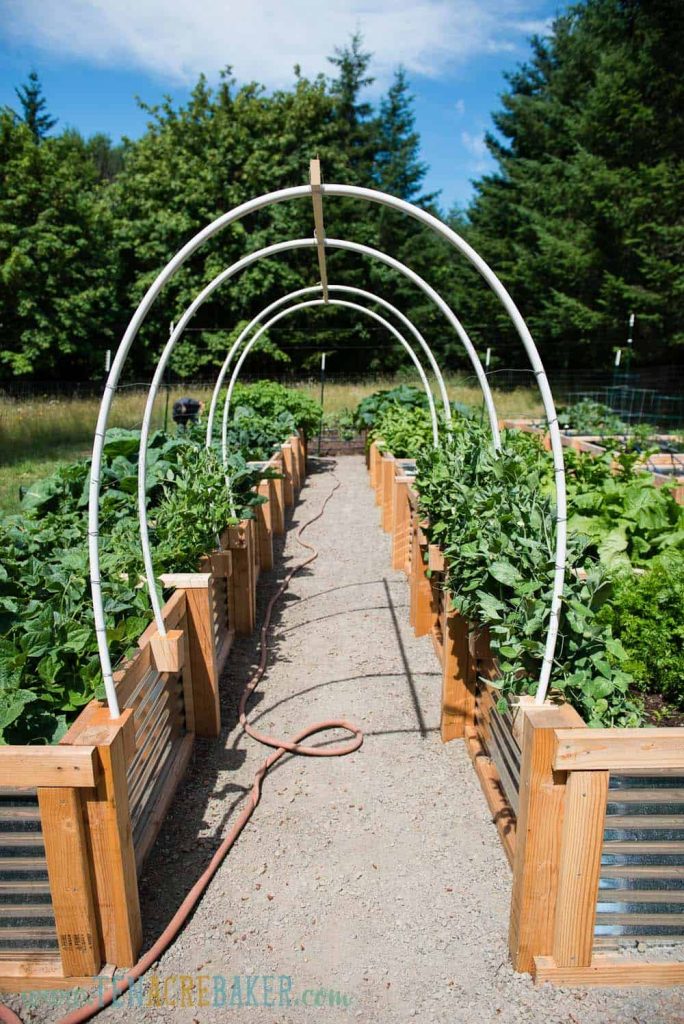
PVC pipe is an affordable and durable material that can be used to build a lightweight yet strong pea trellis. It’s resistant to weather damage and can be customized to fit any garden size.
To construct this trellis, cut PVC pipes to the desired length and connect them using elbow and T-joints to form a rectangular or A-frame structure. Use nylon netting, wire mesh, or twine to create climbing support.
PVC trellises are especially beneficial in raised garden beds, as they can be easily moved and adjusted as needed.
6. Tomato Cage Pea Trellis
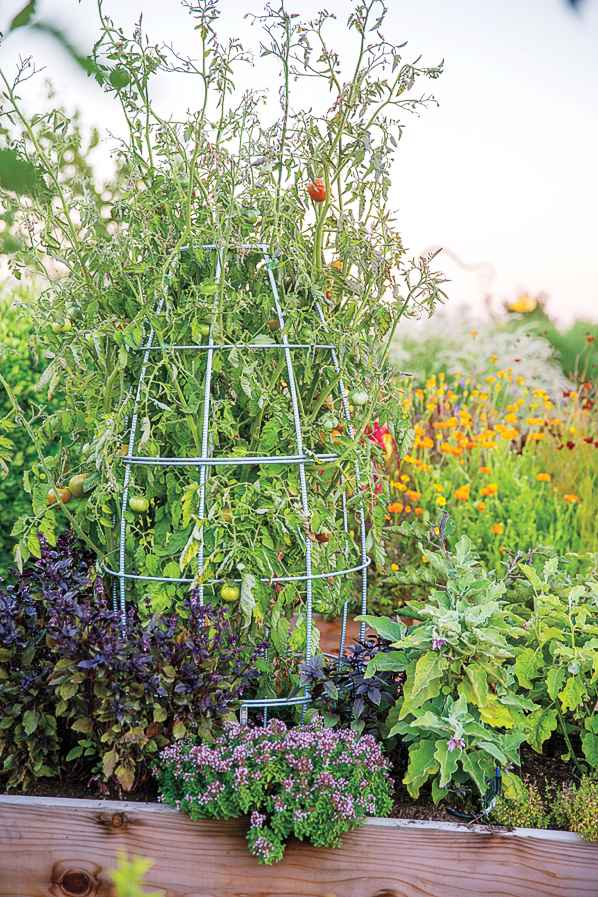
If you have old tomato cages lying around, repurpose them into a quick and efficient pea trellis. Simply place the cage upside down in the garden, securing it with stakes if necessary.
Peas will naturally climb the wires, making harvesting easier and keeping the plants off the ground. This is a great no-fuss option for small gardens.
7. Ladder-Style Wooden Trellis
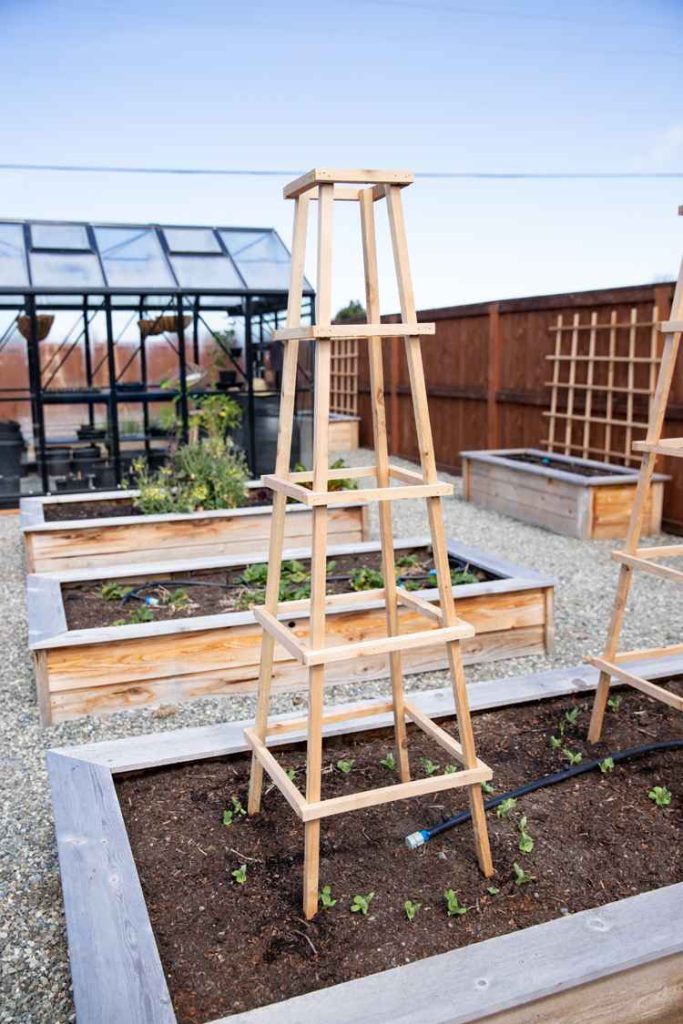
A wooden ladder trellis provides excellent stability for climbing peas while adding a decorative element to your garden.
To build this trellis, use two vertical wooden posts and attach horizontal slats or wooden rungs to create a ladder-like structure. You can lean it against a fence or secure it with stakes for added support.
8. Upcycled Bed Frame Trellis
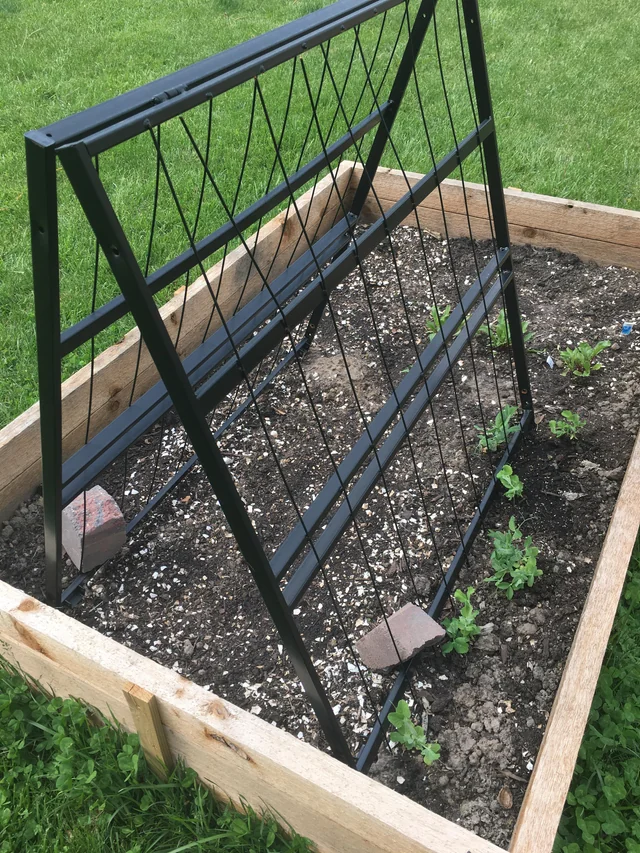
An old metal bed frame can be transformed into a unique and sturdy pea trellis. The headboard and footboard provide excellent climbing surfaces with their built-in bars or decorative metal designs.
Simply position the frame upright in your garden and secure it with stakes. This repurposed trellis not only saves money but also adds a vintage charm to your outdoor space.
9. Garden Twine and Stake Trellis
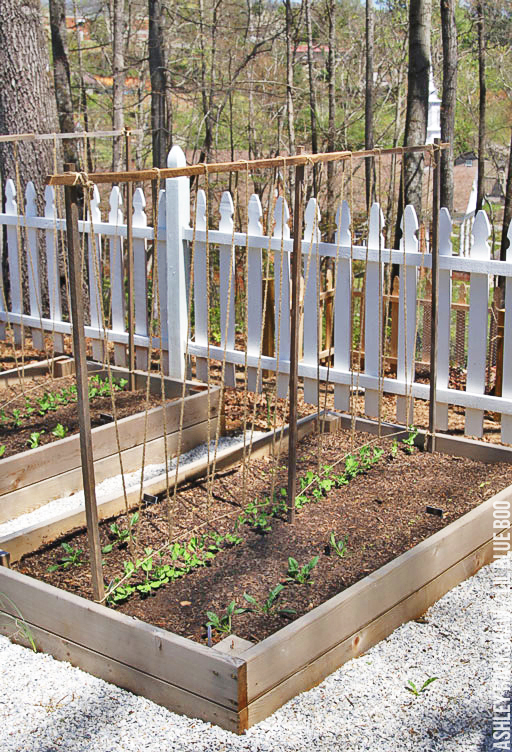
For a budget-friendly, minimalist trellis, use wooden stakes and garden twine. Place stakes into the ground about a foot apart and tie twine horizontally between them in evenly spaced rows.
Pea vines will naturally weave through the twine as they grow, creating a simple yet effective trellis.
10. Hanging String Trellis
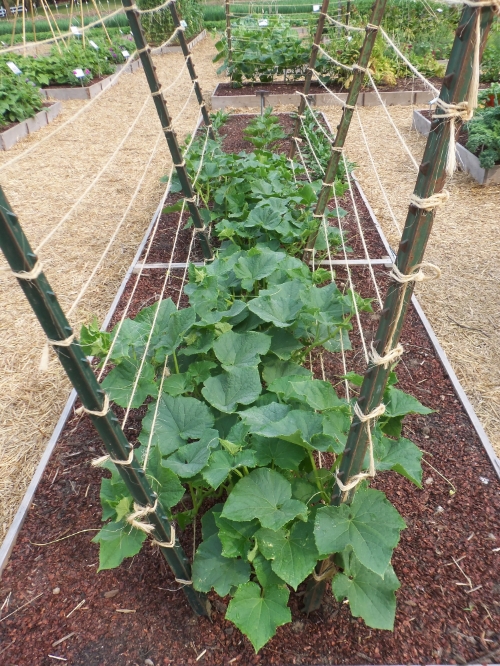
A hanging string trellis is perfect for raised beds, patios, or vertical gardens. Attach strings from a horizontal beam, fence, or pergola and let them dangle down to the soil.
Train pea vines to climb the strings, creating a lush green curtain effect.
11. Archway Pea Trellis
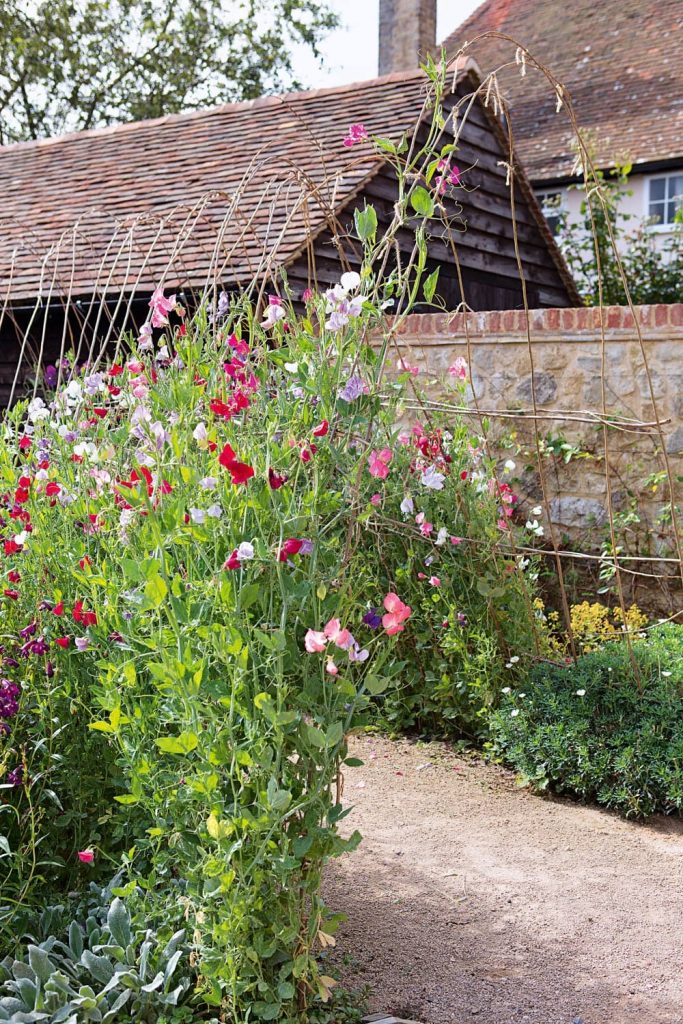
For a grand, eye-catching garden feature, consider building an archway trellis. This method involves using metal or PVC piping bent into an arch shape, secured to the ground with stakes or buried ends.
Cover the arch with wire mesh, netting, or twine, and plant peas at the base. As they grow, they will cover the structure in vibrant greenery, creating a stunning garden tunnel.
12. Fence Panel Trellis

If you already have a garden fence, take advantage of it by using it as a natural trellis. Secure wire mesh, netting, or horizontal wooden slats to the fence to give peas a surface to climb.
This method saves space while integrating seamlessly into your backyard design.
13. Recycled Bike Wheel Trellis
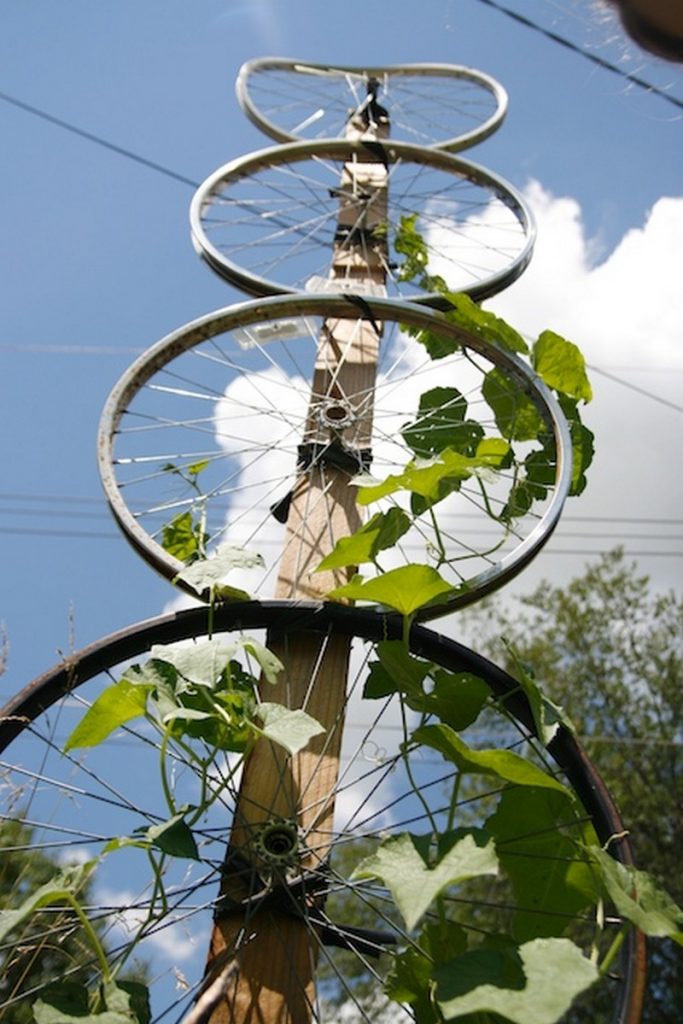
An old bike wheel can be repurposed into a creative pea trellis by attaching it to a wooden post or securing it to a fence. The spokes provide a perfect climbing structure, and multiple wheels can be stacked for a taller trellis.
This upcycled idea adds an artistic and functional touch to your garden.
14. Cattle Panel Arched Trellis
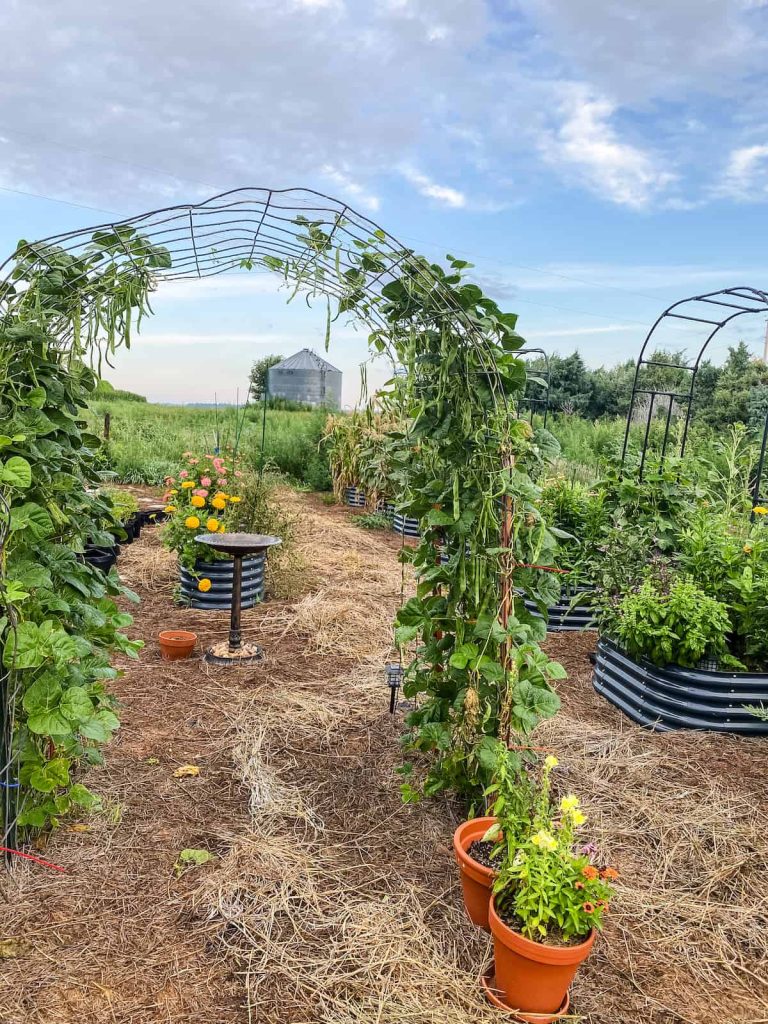
A cattle panel trellis is a fantastic option for those looking for a sturdy and long-lasting structure. These heavy-duty wire panels can be bent into an arch shape and secured into the ground, creating a tunnel-like trellis.
Peas love climbing these panels, and the open design makes harvesting a breeze.
15. Pallet Pea Trellis

Wooden pallets are a great free or low-cost material for building a pea trellis. Simply stand a pallet upright and secure it with stakes or attach netting for additional climbing support.
This is an easy and effective way to give your garden a rustic, upcycled look while providing your peas with the perfect climbing surface.
16. Metal Conduit Pea Trellis
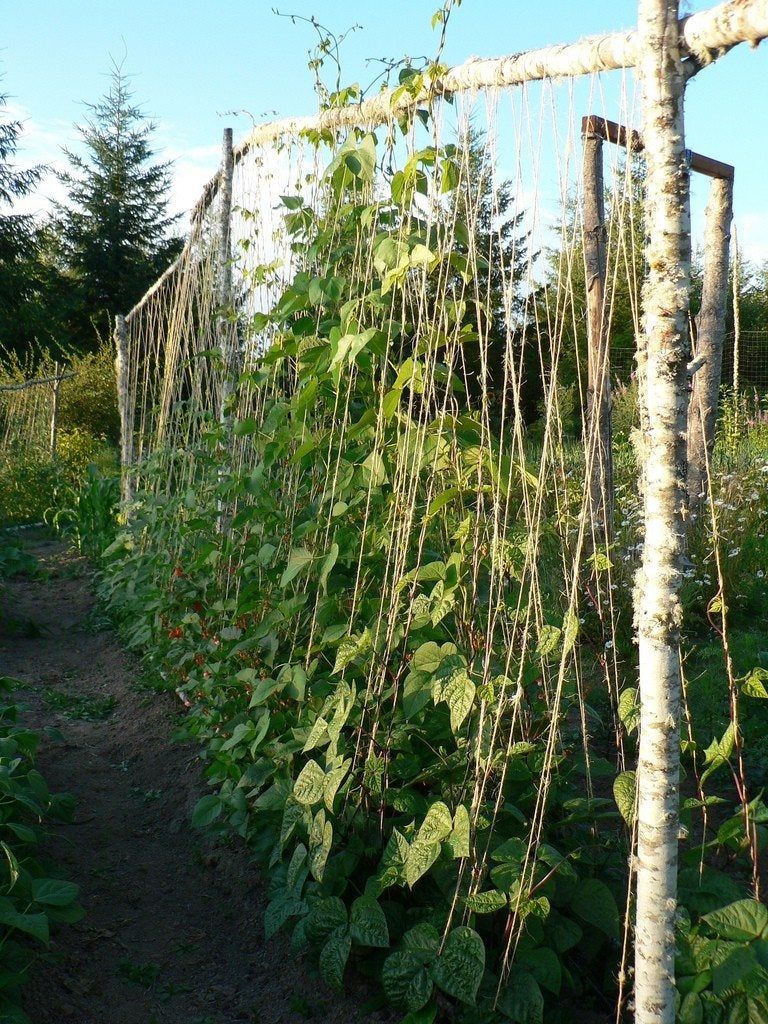
For those looking for a modern and sleek trellis design, a metal conduit trellis is a great choice. Metal conduit pipes are durable, weather-resistant, and can withstand the weight of heavy pea vines.
To build this trellis, use metal conduit pipes to create a rectangular or arch-shaped frame. Secure them into the ground with metal stakes or brackets, then attach wire mesh, cattle panel, or garden netting for climbing support.
This design works well in contemporary garden spaces and provides long-lasting support for your pea plants.
17. Foldable Pea Trellis
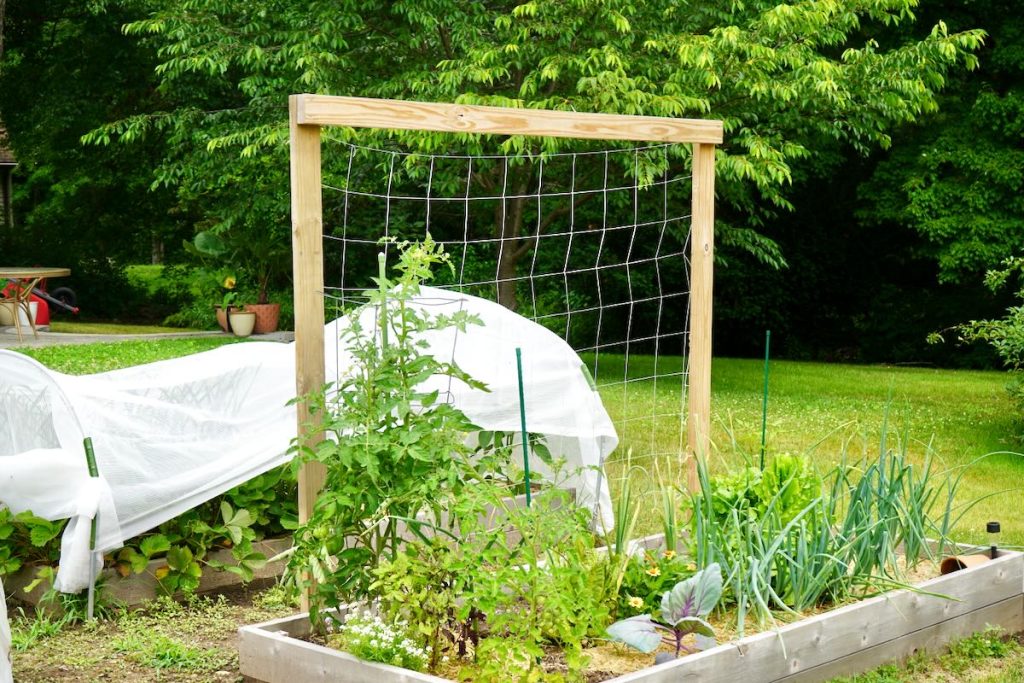
A foldable trellis is perfect for gardeners who want a space-saving option that can be easily stored at the end of the growing season.
To make one, construct an A-frame trellis using wooden planks or bamboo poles. Attach hinges at the top so that the structure can be folded flat when not in use. Stretch garden netting, wire mesh, or twine between the frames to create climbing support.
This practical trellis is ideal for small gardens, raised beds, or renters who need a temporary gardening solution.
18. DIY Rope Trellis
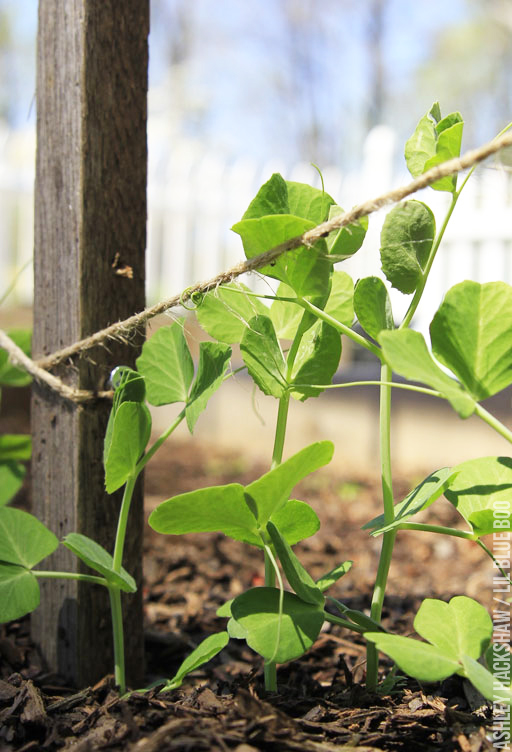
A rope trellis is a simple, budget-friendly option that works well for those who want a natural and minimalist look.
To create a rope trellis, secure two sturdy wooden posts or metal rods into the ground. Then, weave strong garden twine, jute, or natural fiber rope between them in a crisscross pattern.
Peas will climb the rope as they grow, creating a beautiful green wall that blends seamlessly into any garden setting.
19. Hoop House Trellis
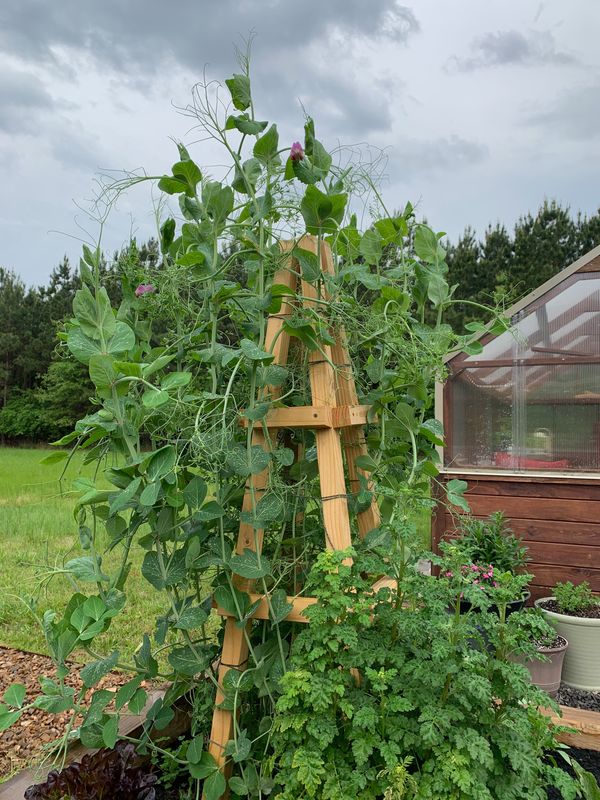
A hoop house trellis is a unique option that combines the benefits of a greenhouse and a vertical growing system.
To build this trellis, use PVC pipes or flexible metal rods to form an arched structure over your garden bed. Cover the arch with garden netting, chicken wire, or trellis mesh.
This setup not only provides excellent support for climbing peas but also offers some weather protection, making it a great choice for extending your growing season.
20. Chicken Wire Trellis
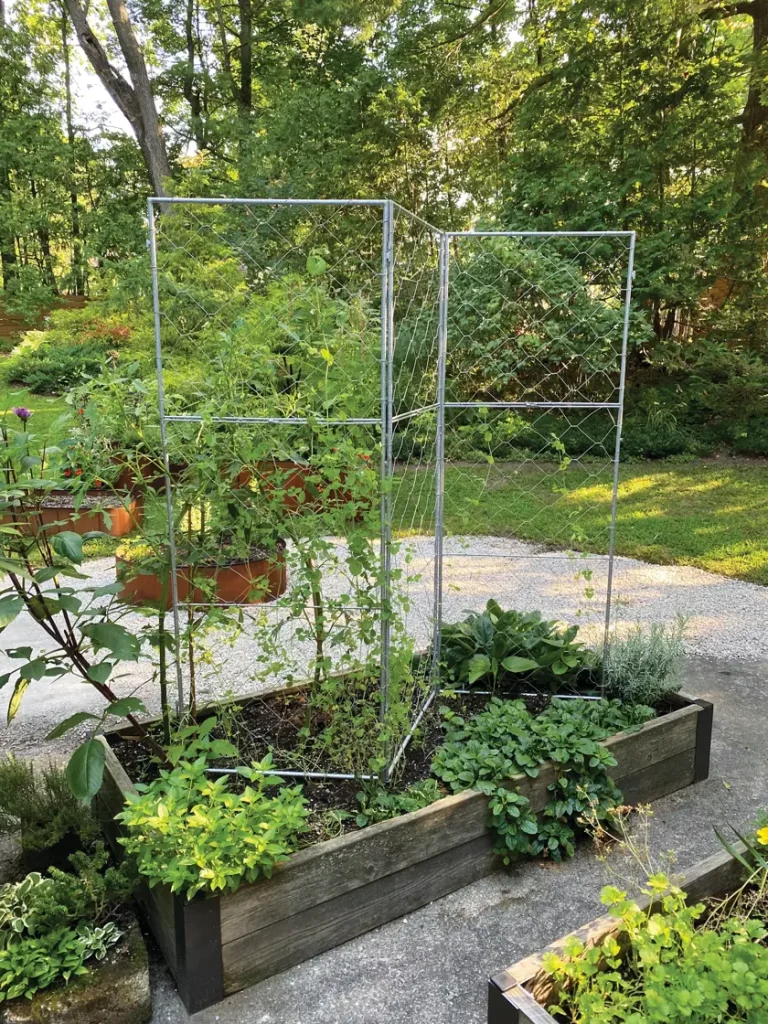
Chicken wire is an inexpensive and easy-to-use material for creating a durable pea trellis.
To build one, install two wooden stakes or metal poles in the ground, then stretch a sheet of chicken wire between them. Secure it with nails, staples, or zip ties.
The small gaps in the wire provide the perfect grip for pea tendrils, making this a simple yet highly effective trellis solution.
21. Hula Hoop Pea Trellis
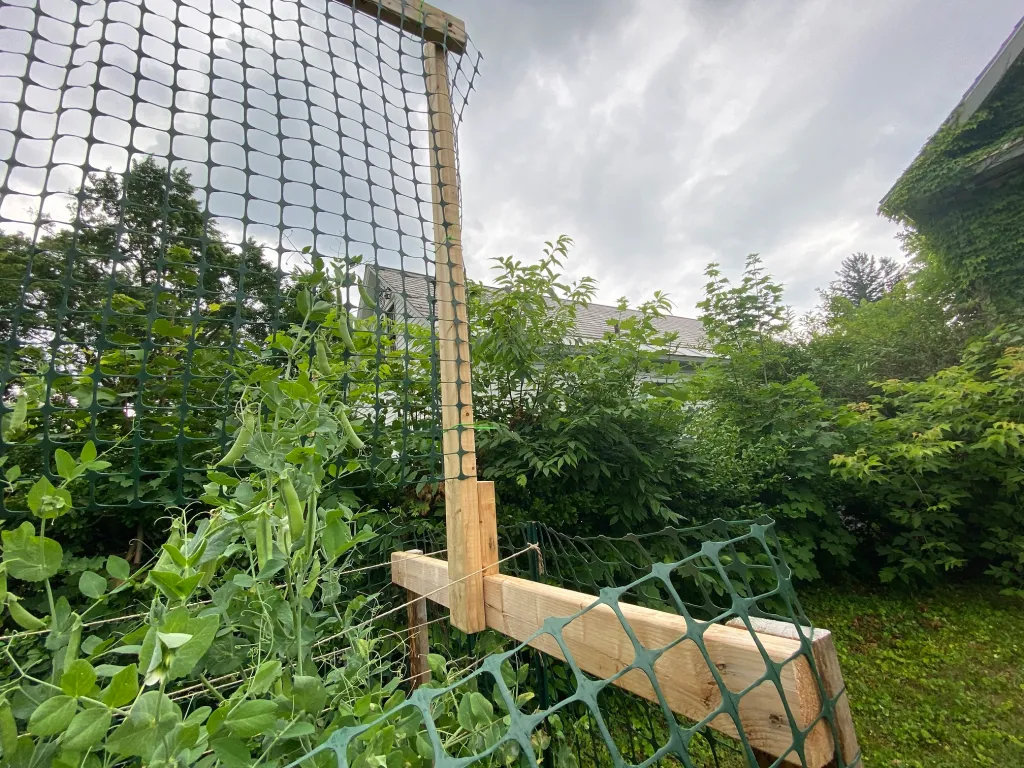
For a fun and creative trellis, repurpose old hula hoops into a circular climbing structure.
To do this, attach two or more hula hoops to a sturdy post or frame, securing them in a vertical or angled position. You can also weave garden twine or wire across the hoops to create additional climbing surfaces.
This unique trellis idea adds a playful touch to your garden while providing excellent vertical support for peas.
22. Crisscross Bamboo Lattice
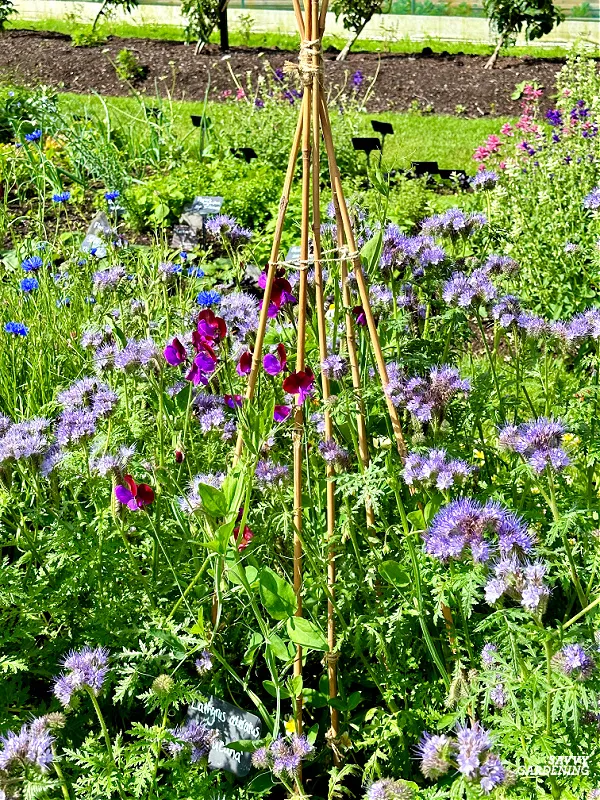
A crisscross bamboo lattice trellis is both functional and visually appealing.
To build this trellis, arrange bamboo sticks or thin wooden slats in a lattice pattern, securing the intersections with garden twine or nails. Attach the structure to wooden stakes or place it against a fence for extra support.
This design is perfect for adding a decorative touch to your garden while helping peas grow upward in an organized manner.
23. Wagon Wheel Trellis
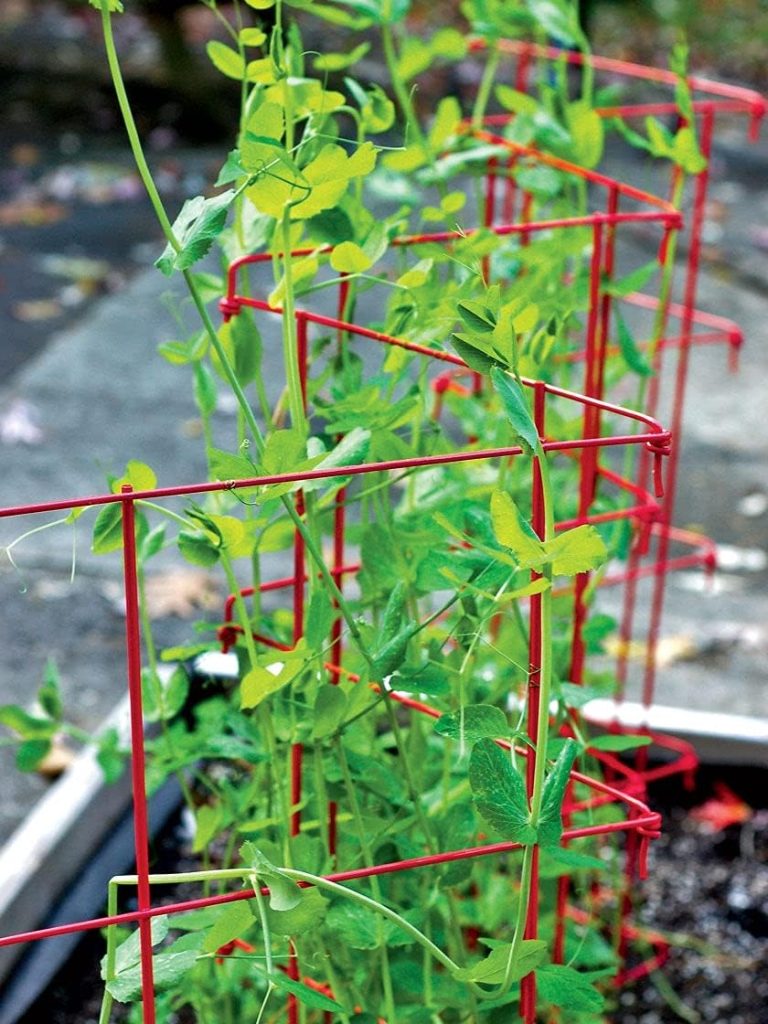
If you love vintage and rustic garden décor, a repurposed wagon wheel makes an excellent pea trellis.
Simply place an old wagon wheel upright in the garden, securing it with stakes or partially burying it for stability. The spokes act as natural climbing supports, and you can weave additional twine between them if needed.
This trellis design is not only practical but also serves as a charming focal point in your outdoor space.
24. DIY Metal Grid Trellis

A metal grid trellis is a sleek and durable option, especially for modern garden designs.
To make one, mount a metal grid panel or welded wire fence onto a wooden or metal frame. Secure the structure in your garden, and plant peas at the base.
This type of trellis is ideal for patios, balconies, or urban gardens where space is limited but vertical growing is encouraged.
25. Trellis Tunnel for Peas

A trellis tunnel is an enchanting way to grow peas while creating a shaded walkway in your garden.
To build this, bend cattle panels or metal fencing into an arch shape and secure the ends into the ground. Peas will climb up and over the tunnel, forming a lush green canopy.
This design not only maximizes garden space but also creates a magical outdoor experience, perfect for garden enthusiasts who love creative landscaping ideas.
26. Reclaimed Wood Panel Trellis
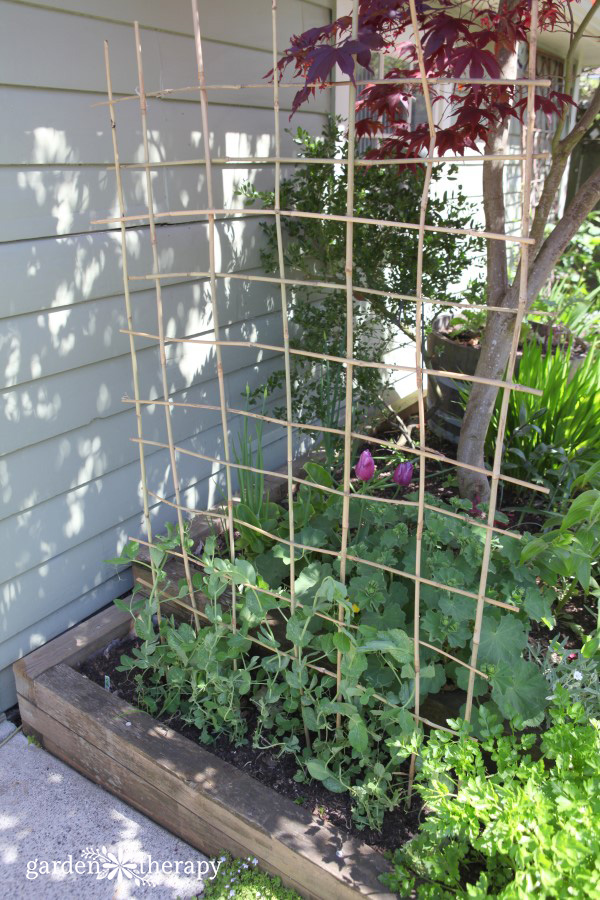
Reclaimed wood panels can be transformed into a charming pea trellis with minimal effort.
Attach a wooden panel or lattice screen to a sturdy frame and place it in your garden. Secure it with posts or lean it against a wall for support.
This eco-friendly trellis idea adds warmth and character to any outdoor space while promoting sustainable gardening.
27. Repurposed Old Ladder Trellis
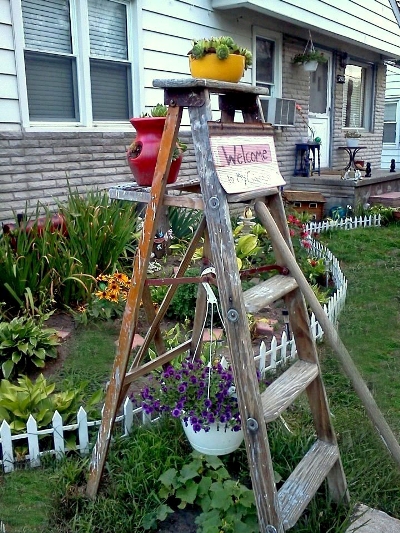
An old wooden or metal ladder can be turned into a functional and stylish pea trellis with very little work.
Simply stand the ladder upright in your garden, or lean it against a fence or wall. Pea plants will naturally climb the rungs, creating a vertical green feature.
This is an excellent way to upcycle old materials while providing an easy-to-maintain trellis for your climbing plants.
Conclusion
A well-designed pea trellis can transform your garden by improving plant health, maximizing space, and making harvesting easier. Whether you prefer a simple twine trellis, a rustic branch structure, or an elaborate archway, there’s a DIY solution for every gardener.
Building your own pea trellis not only saves money but also allows you to customize the design to fit your space and aesthetic preferences. Plus, many of these ideas use upcycled or natural materials, making them an environmentally friendly choice.
Now that you have 27 inspiring DIY trellis ideas, it’s time to choose the one that best suits your garden. Get creative, have fun with the process, and enjoy watching your peas climb to new heights!
4o

